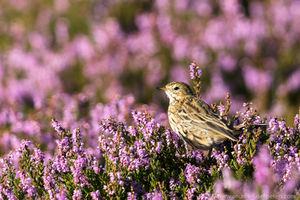ISSS608 2017-18 T3 Assign Anthony Theodore Conclusion
|
|
|
|
|
|
Conclusion, Question 1
Key finding from analyzing pattern accross Lekagul Preserve:
- Rose-crested Blue Pipit population showing growth from 2007, peaked at 2015, then gradually decreasing until 2017.
- Rose-crested Blue Pipit may be the only species that directly affected by the dumping site. This is backed by the map showing they move their cluster away from the dumping site (their initial cluster).
- In 2015, Rose-crested Blue Pipit species singing gradually decreased as their sound turned to call. This is possibly due to stressed condition.
- From our control group, Ordinary Snape and Bombadil, share the same fate as the Rose-crested Blue Pipit, showing sign of struggling albeit did not migrate away.
- Only Vermillion Trillian species seem adapted to the situation and stabilized.
- A lot of other bird species that cluster far from the dumping site seems to suffer the same fate, showing sign of disappearance throughout the year. This raised multiple possible hypothesis.
- That the dumping site extent is that much bigger than initially thought. This is unlikely to be true as unless the waste product is gas based, then it would not be possible to have such large influence inside a park.
- That the dumping site is the not only dire situation inside Lekagul Preserve. There are other dire situation that are not reported that caused other bird species to disappear, such as other dumping site area that are not reported.
- That the dumping event does not exist, and the bird disappear simply because of natural event. This is also unlikely to be true as there are proof that Rose-crested Blue Pipit did indeed moved away from the alleged dumping site.
Conclusion, Question 2
Out of 15 bird sound sent by Kasios, only 3 can be detected as similar to Rose-crested Blue Pipit in terms of frequency, pattern, and the sound itself.
This means that Kasios claim about Rose-crested Blue Pipit is thriving inside the Lekagul Preserve is not supported. Thus, it is save to assume that the Rose-crested Blue Pipit may in a more dire situation than initially suggested, and Kasios may hold some explanation about the disappearance of the Rose-crested Blue Pipit.
Next step to be taken in Investigation
Based on this observation, our conclusion is, while it is true that the Rose-crested Blue Pipit disappearance is linked to the dumping waste taken place, we have not confirmed whether the dumping event is actually taken place.
Instead, we raised another question regarding this dire situation inside Lekagul Preserve. Is it really only Rose-crested Blue Pipit that affected? Is the only critical situation inside Lekagul is a waste dumping event?
It is crucial to conduct further research inside Lekagul Preserve to actually pinpoint the exact cause of the disappearance of a lot of bird species, including Rose-crested Blue Pipit, since a lot of other bird disappear even far away from the alleged dumping site. Some things to take into consideration:
- Take a sample of dirt, air, and water inside Lekagul Preserve, especially in the west area since majority of the missing bird is in that area.
- Research on other species that has the same behavior and characteristic of the Rose-crested Blue Pipit and find out whether introducing them to a controlled environment bring similar result with the Rose-crested Blue Pipit behavior.
